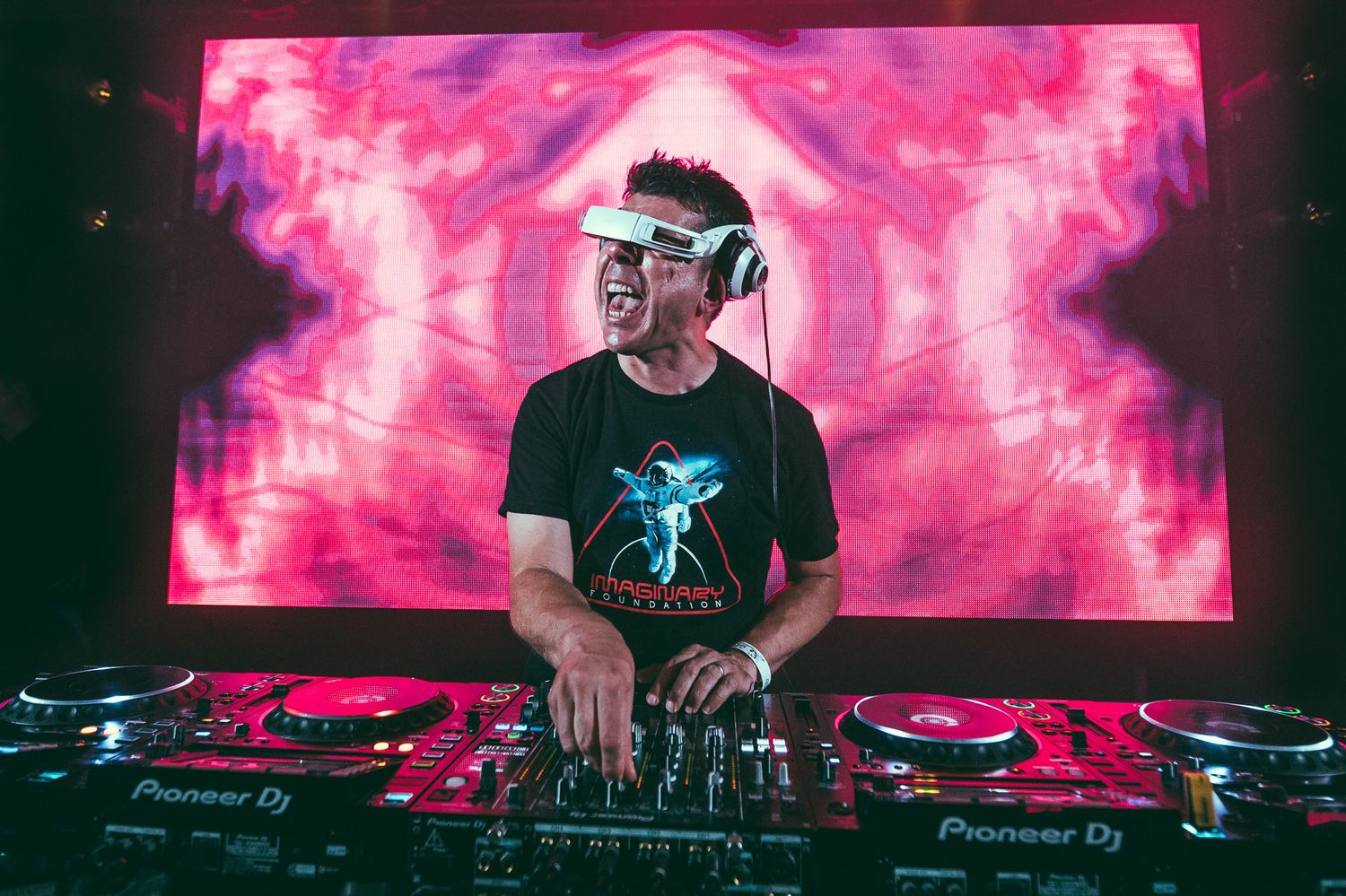Home>Production & Technology>Background Music>Why Is Background Music So Loud In Movies


Background Music
Why Is Background Music So Loud In Movies
Modified: January 22, 2024
Discover why background music in movies is often so loud and how it enhances the cinematic experience. Explore the impact and reasoning behind this creative choice.
(Many of the links in this article redirect to a specific reviewed product. Your purchase of these products through affiliate links helps to generate commission for AudioLover.com, at no extra cost. Learn more)
Table of Contents
- Introduction
- The Purpose of Background Music in Movies
- The Impact of Loud Background Music on Viewer Experience
- Psychological Effects of Loud Background Music on Audience
- Creative Choices and Artistic Intent behind Loud Background Music
- Technical Factors Influencing the Volume of Background Music in Movies
- Audience Perception and Preferences for Loud Background Music
- Criticisms and Controversies Surrounding the Use of Loud Background Music in Movies
- Balancing the Volume: Strategies for Effective Background Music in Movies
- Conclusion
Introduction
Background music is a key element in movies, captivating audiences and enhancing the overall viewing experience. From intense action sequences to emotional moments, the right background music can evoke powerful emotions, heighten suspense, and immerse viewers deeper into the cinematic world. However, one aspect that often draws attention is the volume of background music, particularly when it is perceived as being too loud.
Loud background music in movies has become a topic of discussion among film enthusiasts, critics, and even regular viewers. Some argue that it adds to the dramatic effect and helps in creating a more immersive experience, while others find it distracting or overwhelming. It becomes crucial to understand the purpose and impact of background music in movies, including why it is sometimes deliberately set at a seemingly high volume.
Throughout this article, we will delve into the reasons behind the use of loud background music in movies, exploring its impact on viewer experience, the psychological effects it can have on the audience, and the creative and technical factors that influence its volume. We will also discuss audience perception, preferences, and the controversies surrounding its use. Finally, we will explore strategies for effectively balancing the volume of background music to maximize its impact without overpowering the movie itself.
So, if you have ever wondered why background music can be so loud in movies, or have had strong opinions about its volume, this article will provide you with a comprehensive understanding of the subject.
The Purpose of Background Music in Movies
Background music serves a multitude of purposes in movies, playing a vital role in setting the tone, enhancing emotional impact, and guiding the audience’s interpretation of the story. It is carefully composed and selected to complement the narrative, characters, and visual imagery on screen. Here are some key purposes and functions of background music in movies:
- Setting the Mood: One of the primary functions of background music is to establish the mood and atmosphere of a scene. It can create a sense of anticipation, excitement, tension, or romance, depending on the desired emotional impact of the particular moment. For example, in a horror movie, ominous and eerie music can heighten the sense of fear and suspense.
- Highlighting Emotions: Background music is instrumental in highlighting and intensifying the emotional aspect of a scene. It can evoke feelings of joy, sadness, fear, or triumph, making the audience more emotionally invested in the story. For instance, in a heartwarming reunion scene, uplifting music can amplify the joy and connection between characters.
- Creating Continuity: Background music helps in creating a cohesive flow throughout a movie. It bridges the gap between different scenes and transitions, maintaining a sense of rhythm and cohesion. It can also assist in smooth editing and seamless narrative progression.
- Building Suspense: One of the most effective uses of background music is in building suspense and tension. It can heighten the anticipation, signaling to the audience that something significant or dramatic is about to happen. By slowly increasing the tempo or employing ominous soundscapes, the music prepares the viewer for an imminent climax or plot twist.
- Characterization: Background music can contribute to the characterization of individual characters or groups, providing musical motifs or themes associated with specific personalities or environments. This helps in creating a deeper connection between the audience and the characters, enhancing their understanding and emotional investment.
- Providing Subtext: In some cases, background music can provide additional layers of meaning and subtext to a scene. It can convey messages or emotions that are not explicitly expressed through dialogue or visuals, adding depth and nuance to the storytelling. This allows for a more nuanced and multi-dimensional viewing experience.
By fulfilling these purposes, background music enhances the overall cinematic experience, elevating the storytelling and immersing the audience in the world created by the movie. While these functions are often achieved through well-balanced and carefully mixed music, the deliberate use of loud background music can also serve specific creative and artistic intentions, which we will explore further in the subsequent sections.
The Impact of Loud Background Music on Viewer Experience
The volume of background music in movies can significantly impact the viewer’s experience, playing a crucial role in shaping their emotional response and overall enjoyment of the film. However, the impact of loud background music can vary among individuals and is subject to personal preferences and the context of the movie itself. Here are some key ways in which loud background music can affect the viewer’s experience:
- Intensifying Emotional Impact: Loud background music has the power to intensify the emotional impact of a scene. It can create a sense of urgency or heighten the emotional atmosphere, making moments more memorable and impactful. For instance, in an action-packed chase sequence, loud and energetic music can add excitement and adrenaline to the scene.
- Enhancing Immersion: When used appropriately, loud background music can enhance the viewer’s immersion in the movie. It can create a sense of being enveloped in the story, drawing the audience deeper into the on-screen events. This immersive experience can lead to a more captivating and engaging viewing experience.
- Influencing Perception and Interpretation: The volume of background music can influence how the audience perceives and interprets a scene. It can guide their attention to specific elements or emotions, shaping their understanding and emotional connection to the story. For example, loud and suspenseful music can foreshadow danger or build tension, influencing the audience’s anticipation and interpretation of subsequent events.
- Increasing Dramatic Effect: Loud background music can enhance the dramatic effect of certain scenes, heightening the impact of key moments. It can elicit a visceral response from the viewer, stirring emotions and creating a memorable cinematic experience. However, an excessive or overpowering volume of music can distract from the storytelling and overwhelm the other elements of the film.
- Arousing Excitement: In genres such as action or adventure, loud background music can enhance the sense of excitement and thrill. It can elevate the energy level and create a more dynamic viewing experience. The soaring music accompanying a thrilling action sequence can amplify the adrenaline rush and leave a lasting impression on the audience.
- Potential Distraction: On the other hand, excessively loud background music can also become a distraction for viewers. It may hinder their ability to focus on the dialogue, ambient sounds, or other subtle nuances of the movie. This can lead to a loss of immersion and affect overall enjoyment.
The impact of loud background music ultimately depends on the context of the film, the artistic intent, and the individual viewer’s preferences. While it can elevate the cinematic experience when used judiciously, it is essential for filmmakers to strike a balance and ensure that the music does not overpower or detract from the storytelling. By understanding the psychological effects of loud background music, filmmakers can make more informed decisions in their creative choices and deliver a more satisfying viewing experience for a broader audience.
Psychological Effects of Loud Background Music on Audience
Loud background music in movies can elicit a range of psychological effects on the audience, influencing their emotional state, cognitive processes, and overall engagement with the film. Understanding these effects can shed light on the impact of volume on viewer perception and offer insights into the use of loud background music as a storytelling tool. Here are some key psychological effects associated with loud background music:
- Arousal and Excitement: Loud music has the ability to stimulate the listener’s arousal level, triggering a heightened sense of excitement and anticipation. It can increase heart rate, breathing rate, and produce a surge of adrenaline, enhancing the viewer’s engagement and enjoyment of the movie. This effect is commonly utilized in action-packed sequences and suspenseful moments.
- Elevated Emotional Response: Loud background music can intensify emotional responses in viewers. By enhancing the emotional cues and amplifying the impact of key moments, it can evoke stronger feelings of joy, fear, sadness, or tension. This heightened emotional response can create a more immersive and memorable movie-watching experience.
- Attention and Focus: The volume of background music can influence the viewer’s attention and focus. Loud music can capture attention more effectively, directing the viewer’s focus towards specific scenes, characters, or narrative elements. It plays a vital role in guiding the audience’s perception and interpretation of the story unfolding on screen.
- Memory and Recall: Research suggests that loud background music can enhance memory retention and recall. When music is presented at a higher volume, it can create a more salient and distinctive experience, making it easier for viewers to remember specific scenes, dialogues, or musical motifs. This can contribute to a more vivid and lasting memory of the movie.
- Perceived Intensity and Quality: The volume of background music can influence the viewers’ perception of the intensity and quality of a movie. Louder music is often associated with a greater sense of grandeur, power, and impact. It can enhance the perceived cinematic experience, making the movie appear more epic and immersive.
- Engagement and Immersion: Loud background music can enhance viewer engagement and immersion in the film. When used appropriately, it can create a sense of being fully absorbed in the story, blocking out distractions and facilitating a deeper emotional connection with the on-screen events. This heightened level of engagement can contribute to a more satisfying film-watching experience.
It is important to note that while loud background music can elicit these psychological effects, individual preferences and context play a significant role in the viewer’s response. What may enhance the experience for some viewers may be overwhelming or distracting for others. Filmmakers must carefully consider the balance between the desired emotional impact and the potential for excessive volume to negatively affect the audience’s engagement and enjoyment of the movie.
Creative Choices and Artistic Intent behind Loud Background Music
The use of loud background music in movies is often a deliberate creative choice made by filmmakers to serve a specific artistic intent. It involves careful consideration of various factors, including the narrative, genre, mood, and desired impact on the audience. Understanding the creative choices and artistic intent behind loud background music can provide insights into the thought process and vision of filmmakers. Here are a few key aspects to consider:
- Dramatic Effect and Impact: Filmmakers may opt for loud background music to enhance the dramatic effect of specific scenes or to create a sense of impact. By increasing the volume, they aim to intensify emotions, capture the attention of viewers, and leave a lasting impression. This can be particularly effective during climactic moments or pivotal turning points in the storyline.
- Genre-specific Conventions: Different genres have their own conventions and expectations when it comes to background music. For instance, in action films or thrillers, loud and energetic music is commonly used to heighten the excitement and thrill of the scenes. Comedies may use upbeat and lively music for comedic effect. By adhering to these genre-specific conventions, filmmakers aim to create a cohesive and immersive experience for the audience.
- Creating Contrast and Foreshadowing: The use of loud background music can create contrast and foreshadowing in a film. By juxtaposing moments of silence or quiet with sudden bursts of loud music, filmmakers can accentuate certain story elements or signal a shift in the narrative. This contrast in volume can help build tension and surprise viewers, enhancing the overall impact of the storytelling.
- Symbolic or Metaphorical Representation: In some cases, loud background music may be used symbolically or metaphorically to represent certain themes, emotions, or character traits. The choice of volume can be an artistic expression, conveying the intensity or power of particular concepts or phenomena within the movie. This adds another layer of meaning and enhances the storytelling on a symbolic level.
- Cultural and Historical Context: Filmmakers may consider the cultural and historical context of a movie when deciding on the volume of background music. For example, in a period film depicting a grandiose ballroom dance, louder classical music may be used to capture the atmosphere and authenticity of the time period. The volume of the music can help transport viewers to a specific era or cultural setting, enriching their overall experience.
- Personal Artistic Vision: Ultimately, the use of loud background music stems from the personal artistic vision and creative choices of the filmmakers. The volume and intensity of the music can be a reflection of their unique style, aesthetics, and storytelling preferences. It allows them to evoke specific emotions, create a particular ambiance, and leave a lasting impact on the audience, aligning with their overall creative vision.
By understanding the creative choices and artistic intent behind the use of loud background music, viewers can gain a deeper appreciation for the thought and intentionality put into its inclusion. These choices contribute to the overall cinematic experience, shaping the narrative, enhancing emotional impact, and immersing the audience into the director’s unique vision.
Technical Factors Influencing the Volume of Background Music in Movies
The volume of background music in movies is influenced by various technical factors, which determine how it is mixed and presented to the audience. These factors play a crucial role in achieving the desired balance between the music, dialogue, and other audio components of a film. Understanding these technical factors can provide insights into the process of creating an immersive audio experience. Here are some key technical factors influencing the volume of background music in movies:
- Sound Mixing and Mastering: The process of sound mixing and mastering involves the careful blending of different audio elements to achieve the desired balance and overall sound quality. The volume of background music is adjusted during this process to ensure that it does not overpower other audio components, such as dialogue or sound effects. Skilled audio engineers and mixers utilize their expertise to create a cohesive and balanced audio experience.
- Dynamic Range Compression: Dynamic range compression is a technique used to reduce the difference between the softest and loudest parts of an audio recording. In the case of background music in movies, dynamic range compression is employed to control the volume fluctuations and maintain a consistent level throughout the film. This ensures that the music remains audible and impactful without overwhelming other sounds.
- Speaker System and Theater Acoustics: The quality of the speaker system and the acoustics of the theater can have an impact on the perceived volume of background music. The characteristics of the speakers, including their frequency response and power output, can influence how the music is reproduced in the theater. Additionally, the acoustic properties of the theater, such as its size and shape, can affect the way sound travels and is perceived by the audience.
- Optimization for Different Viewing Platforms: Movies are often optimized for different viewing platforms, including theaters, home theaters, and streaming services. The volume of background music may be adjusted accordingly to ensure a consistent experience across these platforms. For example, the mastering for a theater release may be different from the one for a streaming service to account for differences in playback systems and environments.
- Content Distribution Standards: Content distribution platforms, such as streaming services or disc distributors, may have specific standards and guidelines regarding audio levels. These standards ensure compatibility and a consistent listening experience for the audience. Filmmakers and sound engineers need to adhere to these standards when finalizing the volume of background music for distribution.
- Director’s Vision and Collaboration with Audio Team: Ultimately, the director’s vision and collaboration with the audio team play a significant role in determining the volume of background music. The director works closely with the sound designer, composer, and audio engineers to achieve the desired audio balance and impact. They provide artistic direction and guidance, ensuring that the music aligns with their creative vision for the film.
By considering these technical factors, filmmakers can ensure that the volume of background music is optimized for the intended viewing experience. This allows for a balanced and immersive audio presentation, where the music enhances the storytelling without overpowering other crucial aspects of the film.
Audience Perception and Preferences for Loud Background Music
Audience perception and preferences for the volume of background music in movies can vary widely. While some viewers enjoy the immersive and intense experience that loud music can provide, others may find it distracting or overwhelming. Understanding audience perception and preferences is crucial for filmmakers to strike the right balance and create an enjoyable viewing experience. Here are some key aspects related to audience perception and preferences for loud background music:
- Individual Sensitivity to Sound: Individuals have varying levels of sensitivity to sound, which can influence how they perceive the volume of background music. Some people may be more tolerant of loud music and enjoy its impact, while others may find it uncomfortable or overwhelming. Factors such as hearing abilities, previous exposure to loud sounds, and personal preferences all play a role in individual sensitivity to sound.
- Genre and Context Sensitivity: Audience perception and preferences for loud background music can also be influenced by the genre and context of the movie. Action-packed films or thrilling sequences may be expected to have louder background music to match the intensity of the visuals and storytelling. In contrast, quieter, dialogue-driven scenes may be better suited for subtler, softer music to allow for better comprehension and emotional connection.
- Emotional Impact and Immersion: Some viewers appreciate loud background music for its ability to enhance emotional impact and create a more immersive experience. They enjoy being fully engaged in the movie and feeling the intensity of the music in relation to the story. Loud music can evoke strong emotional responses, making viewers feel more connected and involved in the narrative.
- Preference for Audio Clarity: For some viewers, audio clarity is of utmost importance. They may prefer background music to be mixed at a lower volume, allowing for clearer dialogue and sound effects. This preference stems from a desire to fully understand and appreciate all aspects of the film’s audio, without any element overpowering the others.
- Taste and Cultural Factors: Personal taste and cultural background can also shape audience preferences for the volume of background music. Different cultures have diverse preferences for audio levels and sonic aesthetics. Similarly, personal experiences and exposure to different genres of music may influence an individual’s perception and enjoyment of loud background music in movies.
- Balance and Appropriateness: Many viewers appreciate a well-balanced mix of background music that complements the visuals and other audio elements without overpowering them. They may prefer that the volume of the music is carefully calibrated to maintain an immersive experience while allowing for clear dialogue comprehension and cinematic coherence. Achieving this balance is essential so that the music enhances the overall movie-watching experience without detracting from it.
Ultimately, the preferences for the volume of background music in movies will vary from person to person. Filmmakers must consider this diversity in audience perception when making decisions about the volume of the music and ensure that it aligns with the overall artistic vision and story being told. Striking a balance between the desired impact of the music and the comfort and enjoyment of the audience is key to creating a satisfying viewing experience for a wide range of viewers.
Criticisms and Controversies Surrounding the Use of Loud Background Music in Movies
The use of loud background music in movies has generated its fair share of criticisms and controversies within the film industry and among viewers. While many appreciate the immersive and emotional impact that loud music can create, others have voiced concerns about its potential drawbacks. Here are some common criticisms and controversies surrounding the use of loud background music in movies:
- Overpowering Dialogue: One of the main criticisms of loud background music is that it can overpower dialogue, making it difficult for viewers to understand and follow conversations between characters. When the music is too loud, it can drown out key information, affecting the overall comprehension and enjoyment of the movie.
- Lack of Dynamic Range: Some critics argue that loud background music can contribute to a lack of dynamic range in films. When the music remains consistently loud throughout the film, it can diminish moments of quiet or silence that are crucial for building tension, providing contrast, and enhancing emotional impact. This lack of dynamic range can result in a less nuanced and immersive cinematic experience.
- Reduced Emotional Impact: Despite the intention to heighten emotional impact, loud background music can sometimes have the opposite effect. Viewers may find the volume overwhelming or distracting, preventing them from fully engaging with the story and connecting with the characters. This can diminish the emotional resonance of the film, leading to a less impactful experience.
- Sensory Overload: Excessive volume in background music can contribute to sensory overload for some viewers, particularly individuals with sensory sensitivities. It can be overwhelming and lead to discomfort or fatigue, hindering their ability to fully enjoy the movie. Filmmakers must consider the varied sensory needs of their audience when deciding on the volume of background music.
- Unrealistic Soundscapes: In certain instances, loud background music may lead to a sense of artificiality or inauthenticity within the film’s soundscapes. Some viewers argue that excessively loud music can detract from the realism and natural ambiance of the scenes, making them feel manipulated or staged. This can impact the viewer’s immersion in the fictional world and weaken the connection to the storyline.
- Distracting from Other Elements: When the volume of background music becomes too pronounced, it can draw attention away from other important elements of the film, such as cinematography, acting, or storytelling. Instead of enhancing the overall cinematic experience, loud music may dominate and distract from the intended focus and impact of these elements.
It is important to note that criticisms and controversies surrounding the use of loud background music are subjective and dependent on individual preferences and experiences. While some viewers may find it problematic, others may appreciate the intense and immersive experience it creates. To address these concerns, filmmakers can focus on achieving a better balance between the volume of background music, dialogue clarity, and dynamic range, making conscious decisions to enhance the overall quality of the audio presentation in their films.
Balancing the Volume: Strategies for Effective Background Music in Movies
Creating an effective balance in the volume of background music is crucial for ensuring an immersive and enjoyable movie-watching experience. Here, we will explore some strategies that filmmakers can employ to achieve the right balance and maximize the impact of background music:
- Consider the Narrative and Mood: Filmmakers need to carefully consider the narrative and mood of the scene to determine the appropriate volume for the background music. By aligning the music with the emotions, tension, or energy of the scene, they can enhance the storytelling and create a more engaging experience.
- Dynamic Range: Maintaining a dynamic range in the music is important. By utilizing softer and louder sections strategically, filmmakers can create contrast and emphasis in key moments, enhancing the emotional impact without overpowering other audio elements.
- Mixing and Mastering: Skillful sound mixing and mastering are essential for achieving a well-balanced audio mix. This involves blending the background music with dialogue, sound effects, and other audio components harmoniously. By adjusting the levels, panning, and frequency ranges, sound engineers can ensure that the music complements the visuals without overpowering other important audio elements.
- Testing and Feedback: Conducting test screenings and seeking feedback from a diverse group of viewers can provide valuable insights into the perceived volume of the background music. This feedback can help identify potential issues or areas where adjustments may be necessary to achieve a more balanced audio mix that resonates with the target audience.
- Collaboration with Audio Professionals: Collaboration with experienced audio professionals, including composers, sound designers, and mixers, is crucial. These professionals bring a wealth of expertise in crafting the audio landscape of a film. Working together, filmmakers and audio professionals can ensure that the background music is integrated seamlessly and at an appropriate volume to enhance the overall cinematic experience.
- Consider the Viewing Environment: Filmmakers should also take into account the viewing environment where the film will be experienced. Whether in a theater or a home setting, the volume of background music should be adjusted accordingly to maintain an immersive experience while considering the capabilities of the sound system and the acoustic properties of the room.
- Audience Feedback and Perception: Lastly, it is important to consider audience feedback and perceptions of the background music volume. Paying attention to audience preferences and adjusting future films based on feedback can help filmmakers strike the right balance and meet the expectations of their target audience.
By implementing these strategies, filmmakers can achieve a balanced volume for background music in movies, allowing it to effectively enhance the storytelling, evoke emotions, and contribute to an immersive cinematic experience. A well-calibrated audio mix ensures that the music remains an integral part of the film’s narrative without overpowering or distracting from other crucial elements.
Conclusion
The volume of background music in movies plays a significant role in shaping the viewer’s experience and emotional connection to the story. While the use of loud background music can enhance immersion, emotional impact, and dramatic effect, it has also been subject to criticism and controversy. Striking the right balance between the volume of background music and other audio elements is crucial for creating an enjoyable and cohesive cinematic experience.
Understanding the purpose and impact of background music, as well as considering technical factors, audience perception, and creative choices, allows filmmakers to make informed decisions when it comes to the volume of background music. It is essential to maintain a dynamic range, consider the genre and mood of the film, collaborate with audio professionals, and seek feedback from the audience. By employing these strategies, filmmakers can create a well-balanced audio mix that enhances the storytelling, engages the audience, and respects individual preferences.
Ultimately, the volume of background music is a subjective matter, with some viewers appreciating the intensity and emotional resonance it brings, while others prefer a more subtle and nuanced approach. Filmmakers must navigate this delicate balance to create an audio experience that resonates with a wide range of viewers, taking into account the context, genre, narrative, and cultural factors at play.
As technology continues to advance, it becomes even more important for filmmakers to adapt and optimize the volume of background music for different viewing platforms and environments. Whether it’s in a grand theater, a cozy living room, or a personal device, the goal remains the same: to create an immersive and captivating audiovisual experience that transports the audience into the world of the film.
The volume of background music will always be an important and debated aspect of filmmaking, but by considering audience preferences, technical considerations, and the artistic intent behind its use, filmmakers can strike the right balance and create a harmonious audio mix that enhances the magic of the movies.











